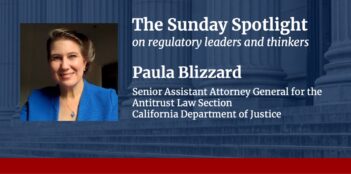
Exploring the real costs of intentional, non-consensual transfers of money.
People engage in all kinds of harmful acts. Drivers speed, manufacturers pollute, and corporate executive issue misleading forecasts. While all these acts are inefficient, the appropriate response is surely not to eliminate all driving, all manufacturing, and all corporate disclosure. That is because all three examples reveal actions that are inefficient in some form or at some level, but are socially desirable in a different form or at a different level. Driving, manufacturing, and corporate disclosure are productive activities that give rise to benefits as well as costs. They may be inefficient, even highly inefficient, but they are only contingently inefficient. Their optimal regulation depends on finding the efficiency-maximizing tradeoff between costs and benefits. In many cases (and in the first approximation), the efficiency is maximized if private actors are forced to take account of the external harms (and benefits) of their acts.
This well-known analysis does not apply to theft as well as a wide range of activities such as naked price fixing and bid rigging, market manipulation and insider trading, securities churning, scalping, front running, and cherry picking, option backdating, spring loading, and bullet dodging, as well as tax shelters. All these acts are subject to the same economic analysis leading to the same ultimate conclusion: considered by themselves, all are inefficient in any form, at any level, and in all circumstances. I refer to theft and theft-like activities like churning and price fixing as irredeemably inefficient (or just irredeemable) acts. Although the distinction between irredeemably and contingently inefficient acts has not been expressly recognized previously, it reflects a fundamental feature of U.S. antitrust law, justifies several recent Delaware Chancery Court decisions, supports the congressional approach to tax shelters, and suggests substantial rethinking of some important aspects of securities and commodities regulation.
I define irredeemably inefficient acts as private, intentional, non-consensual transfers of money. While the money transfer in and of itself is welfare-neutral (that is, the loser loses as much as the winner wins), the transfer’s intentional and non-consensual nature inevitably gives rise to real costs. Yet, for two reasons, irredeemable acts may be overdeterred if enforcement is imperfect. First, enforcement increases the costs of irredeemable acts that remain undeterred. (If anti-churning rules are strengthened, some brokers will stop churning, but others will redouble their efforts to churn and get away with it.) Second, enforcement burdens efficient conduct that yields outcomes indistinguishable from those produced by irredeemable acts. (The same observable act — a broker trading a security in a discretionary account — may reveal irredeemable churning or an efficient act of a faithful agent.) These considerations, rather than the familiar cost-benefit inquiry necessary to address contingently inefficient acts, underlie the unique optimal deterrence analysis of irredeemable acts.
The main doctrinal payoff from distinguishing between contingently and irredeemably inefficient acts is that it is optimal to regulate them separately. Separate regulation yields a number of benefits. First, it eliminates confusion when the same vague term embodies different underlying tradeoffs presented by the two types of acts. For instance, an inquiry into whether a corporate forecast was “excessively” optimistic reflects a cost-benefit tradeoff, but an inquiry into whether a broker engaged in “excessive” trading does not. Second, it allows regulators to combine mental state inquiries with objective tests such as materiality only when appropriate — that is, only for contingently inefficient acts. Third, separate regulation avoids misguided analysis of irredeemable acts — such as an inquiry as to whether the actor was “reckless” — without impeding the same analysis for contingently inefficient ones. Thus, while reckless accounting misstatements certainly exist, reckless churning does not. Deciding whether to sanction the former should have no implications for analyzing the latter. Finally, separate regulation of contingent and irredeemable acts allows regulators to vary the penalty structure for the two types of acts, as may well be necessary in order to provide efficient deterrence in each case.
Adopting my conceptual framework has immediate and direct doctrinal implications. The divide between per se and rule of reason offenses in antitrust (including the gradual shrinking of the per se category) is entirely consistent with my analysis. Differences between contingent and irredeemable acts also supply the missing efficiency-based justification for treating certain corporate board actions lacking “good faith” as duty of loyalty (rather than duty of care) violations even where no conflict of interest exists. In contrast, regulation of securities fraud (and, especially after Dodd-Frank, commodities fraud) ignores the distinction between contingently and irredeemably inefficient acts. If securities law experts are persuaded by my analysis, they may see the benefits of separate regulation of the two types of acts.




